If you liked my page in the past year or so you missed out on my educational blogs that I used to write quite regularly. My job has been an outlet for my nerdiness so my brain is usually tired when it comes time to write a blog about some incredible topic related to Earth Science. When I call myself a dork I am serious. I believe “nerd” and “dork” are terms of endearment that someone earns. Perhaps I am justifying my own lifestyle but nothing is more exciting to me than knowledge. Hence this page and this blog.
Anyway, I have been wanting to write this blog entry for about a year now. The horrendous and devastating 7.8m earthquake that took place in Nepal on April 25 killed at least 6,000 people (as of 5/1/15) increased my conviction to share with you the geology of Nepal. This part of the world is one of the most geologically active regions on Earth. The reason for activity is actually an intriguing piece of geologic history and an excellent example of the power of plate tectonics.
About 225 millions years ago what is now India was actually a large island hanging out in what is today the south Indian Ocean near Australia. This body of water between India and what is now Asia was called the Tethys Sea.
Anyway, I have been wanting to write this blog entry for about a year now. The horrendous and devastating 7.8m earthquake that took place in Nepal on April 25 killed at least 6,000 people (as of 5/1/15) increased my conviction to share with you the geology of Nepal. This part of the world is one of the most geologically active regions on Earth. The reason for activity is actually an intriguing piece of geologic history and an excellent example of the power of plate tectonics.
About 225 millions years ago what is now India was actually a large island hanging out in what is today the south Indian Ocean near Australia. This body of water between India and what is now Asia was called the Tethys Sea.
Pangea, the last supercontinent (all of the continents clumped together) began to break apart. It was at this time that India began drifting north toward Asia. At first the movement was not too fast but soon the Indian plate would pick up speed and end up being one of the fastest-moving tectonic plates in the world. The entire chunk of land began “flying” northward at a rate of about 6’’ per year. That is very fast for geologic processes. In fact, this movement to the north happened so fast that there still skidmarks on the bottom of the Indian Ocean from the edges of India being pushed northward. Really these skidmarks are ancient volcanoes formed from a “hot spot” that pushed magma to the surface as the Indian plate moved northward. This is the same process that is forming the Hawaiian Islands.
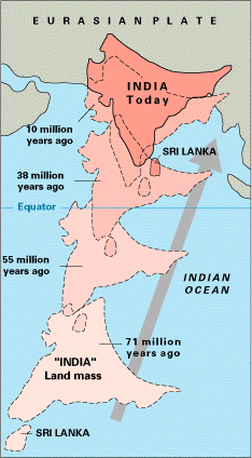 The movement of India. Public Domain. http://goo.gl/EiylZ
The movement of India. Public Domain. http://goo.gl/EiylZ So, here we go. Around 50 million years ago India closed the Tethys Sea and slammed into Asia. The science of plate tectonics, or the movement of the Earth’s crust, is essentially the study of what happens when an immovable objects meets an unstoppable force. The Indian Plate is made of continental crust. The Asian plate where India collided is also continental crust. This means that rock that makes up both plates is similar in the sense that it is less dense than its counterpart, oceanic crust.
Think of it like this: you are swimming in a pool with one of those nice floating air mattresses floating at the surface. You are not paying attention to where you are swimming. Ahead of you is the air mattress pushed up against the wall of the pool. You keep swimming and suddenly you hit the air mattress. What happens? You go under it. Why? The air mattress is more buoyant than you and can float on top. This is what happens on the surface of the Earth. The plates that make up the crust float on top of magma but sometimes those plates collide much like you do when you hit an air mattress. The air mattress is the continental crust. You are the ocean crust (more dense). You go under the air mattress just like the oceanic crust goes under the continental crust (called subduction).
So now take out the air mattress and put in someone of your similar weight and size. You swim toward one another, collide, what happens? Well yes, it hurts, but figuring out who goes under and who floats over the other person is not so easy because of similar density. This is what happened with India hit Asia. India began to crumple and fold on the northern edge as it pushed into the continent. Yea, you crumple a piece of paper and the result is not too impressive. Now crumple continent and watch what happens. Those ridges end up being thousands of feet tall. The crumples and folds gave birth to the Himalayan Mountains. The most famous mountain that almost everyone knows is Mt. Everest. Everest is 29,035 tall. That is nuts. That is where planes fly. There are nine other peaks above about 26,000 feet in the Himalayas. The next tallest mountain outside of Asia is found in South America (called Aconcagua) and it is ONLY 22,841 feet tall. Such an underachiever, right?
Think of it like this: you are swimming in a pool with one of those nice floating air mattresses floating at the surface. You are not paying attention to where you are swimming. Ahead of you is the air mattress pushed up against the wall of the pool. You keep swimming and suddenly you hit the air mattress. What happens? You go under it. Why? The air mattress is more buoyant than you and can float on top. This is what happens on the surface of the Earth. The plates that make up the crust float on top of magma but sometimes those plates collide much like you do when you hit an air mattress. The air mattress is the continental crust. You are the ocean crust (more dense). You go under the air mattress just like the oceanic crust goes under the continental crust (called subduction).
So now take out the air mattress and put in someone of your similar weight and size. You swim toward one another, collide, what happens? Well yes, it hurts, but figuring out who goes under and who floats over the other person is not so easy because of similar density. This is what happened with India hit Asia. India began to crumple and fold on the northern edge as it pushed into the continent. Yea, you crumple a piece of paper and the result is not too impressive. Now crumple continent and watch what happens. Those ridges end up being thousands of feet tall. The crumples and folds gave birth to the Himalayan Mountains. The most famous mountain that almost everyone knows is Mt. Everest. Everest is 29,035 tall. That is nuts. That is where planes fly. There are nine other peaks above about 26,000 feet in the Himalayas. The next tallest mountain outside of Asia is found in South America (called Aconcagua) and it is ONLY 22,841 feet tall. Such an underachiever, right?
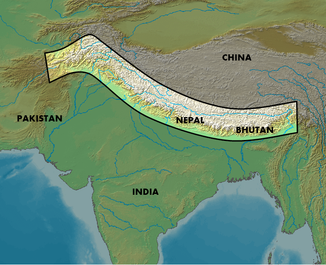 Map of the Himalayas. Public Domain. http://goo.gl/PPT4hJ
Map of the Himalayas. Public Domain. http://goo.gl/PPT4hJ India is still pushing into Asia. Rock does not like being pushed around. The result of this colossal fist fight between these two chunks of rocks is earthquakes. Where two pieces of the Earth’s crust meet there are hundreds of small earthquakes every day. Unfortunately these tiny earthquakes cannot release all of the stress and occasionally there is a large crack or snap. The 7.8M earthquake in Nepal is an example of one of these large cracks or snaps.
So let us consider the Himalayas for a moment. Remember when I mentioned that the Tethys Sea closed due to the Indian Plate moving northward? Well before it closed all of those fish and critters floating around lived and died just like all animals today. When critters die in the ocean they sometimes sink and can potentially become fossils. The land that was at the bottom of the Tethys Sea was in a badddd place. It was pushed under Asia until India collided and finally some of it was pushed into the Himalayan Mountains. From there the only place to go is up. Today we can find fossils of fish and whales many thousands of feet up in the Himalayas.
Anyway, the Himalayas are growing at a rate of about a centimeter a year. If you do the math over all of those millions of years you would probably come to the conclusion that the mountain range should be hundreds of miles high. Well, you are correct, but Earth’s atmosphere is sassy. There is a reason people do not live on the tallest mountains. It is NOT VERY FUN AT THE TOP. You cannot breathe because the air is so thin. The wind blows your face off. Radiation increases at higher altitudes. All of these processes are not fun for humans and they are definitely not very kind to rock. It is called erosion and it is the great equalizer of land. As the mountains grow, they erode, and this prevents Mt. Everest from reaching into the orbit of the International Space Station.
Also, if you get really large you run the risk of breaking the chair you are sitting in. The rock under the Himalayas is only so strong and definitely cannot support a 200 mile tall mountain very well. The rock would crack and fold and landslides would prevent much vertical growth.
The reality is that humans are just a species living on a planet that frankly does not care that we are here. Species rise and fall all of the time and we are just along for the ride. Earthquakes and other natural disasters will continue. The only thing we can do is gain knowledge and try to make people aware of the risks of living in areas where Earth’s crust collides.
Thanks for reading!
Here are some facts:
I do not know everything. Here are my sources:
http://www.todayifoundout.com/index.php/2013/12/himalayas-formed/
http://www.wisegeek.org/how-were-the-himalayas-created.htm
http://pubs.usgs.gov/gip/dynamic/himalaya.html
http://scienceline.ucsb.edu/getkey.php?key=3907
http://www.geolsoc.org.uk/Plate-Tectonics/Chap3-Plate-Margins/Convergent/Continental-Collision
http://www.telegraph.co.uk/news/worldnews/asia/mounteverest/10774877/Climbing-Mount-Everest-what-you-need-to-know.html
So let us consider the Himalayas for a moment. Remember when I mentioned that the Tethys Sea closed due to the Indian Plate moving northward? Well before it closed all of those fish and critters floating around lived and died just like all animals today. When critters die in the ocean they sometimes sink and can potentially become fossils. The land that was at the bottom of the Tethys Sea was in a badddd place. It was pushed under Asia until India collided and finally some of it was pushed into the Himalayan Mountains. From there the only place to go is up. Today we can find fossils of fish and whales many thousands of feet up in the Himalayas.
Anyway, the Himalayas are growing at a rate of about a centimeter a year. If you do the math over all of those millions of years you would probably come to the conclusion that the mountain range should be hundreds of miles high. Well, you are correct, but Earth’s atmosphere is sassy. There is a reason people do not live on the tallest mountains. It is NOT VERY FUN AT THE TOP. You cannot breathe because the air is so thin. The wind blows your face off. Radiation increases at higher altitudes. All of these processes are not fun for humans and they are definitely not very kind to rock. It is called erosion and it is the great equalizer of land. As the mountains grow, they erode, and this prevents Mt. Everest from reaching into the orbit of the International Space Station.
Also, if you get really large you run the risk of breaking the chair you are sitting in. The rock under the Himalayas is only so strong and definitely cannot support a 200 mile tall mountain very well. The rock would crack and fold and landslides would prevent much vertical growth.
The reality is that humans are just a species living on a planet that frankly does not care that we are here. Species rise and fall all of the time and we are just along for the ride. Earthquakes and other natural disasters will continue. The only thing we can do is gain knowledge and try to make people aware of the risks of living in areas where Earth’s crust collides.
Thanks for reading!
Here are some facts:
- The Appalachian Mountains were once very similar to the height of the Himalayas about 300 million years ago. 300 million years of erosion fixed that.
- The Himalaya vertical growth is slowing. This is probably because India is spreading out rather than pushing north as much as it used to.
- The Himalayas will erode to nothing one day.
- People are obsessed with climbing Everest. Around 4,000 people have made it to the summit since the first in 1950. About 250 people died trying to reach the summit and many of those people are still frozen on the mountain.
- The Adirondack Mountains are growing, too! If the Himalayas grow about 3 feet every 100 years the Adirondacks grow about 6’’ to 1’ every 100 years. This rate exceeds the rate of erosion. Earthquakes are common in the Adirondacks.
I do not know everything. Here are my sources:
http://www.todayifoundout.com/index.php/2013/12/himalayas-formed/
http://www.wisegeek.org/how-were-the-himalayas-created.htm
http://pubs.usgs.gov/gip/dynamic/himalaya.html
http://scienceline.ucsb.edu/getkey.php?key=3907
http://www.geolsoc.org.uk/Plate-Tectonics/Chap3-Plate-Margins/Convergent/Continental-Collision
http://www.telegraph.co.uk/news/worldnews/asia/mounteverest/10774877/Climbing-Mount-Everest-what-you-need-to-know.html

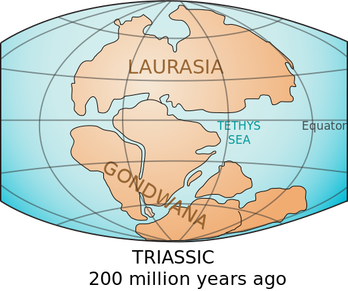
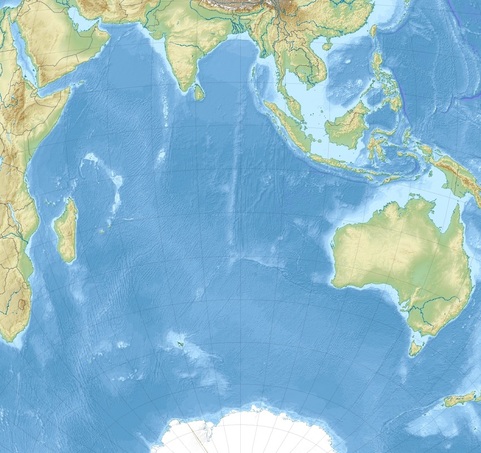
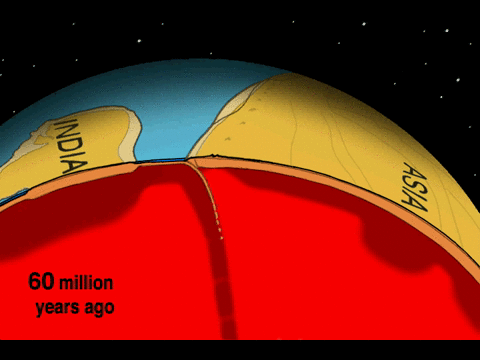
 RSS Feed
RSS Feed
